- Local Time: 02:36 PM
- Weather: 28 ℃ / 83 ℉
The Wait Is Over – The GRAND EGYPTIAN MUSEUM Is Opening Its Doors! Be among the first to explore Egypt’s greatest treasure.
Abydos Temple, near Sohag, is one of Egypt’s oldest and most sacred sites, originally a royal necropolis in the Predynastic Period. It became a major pilgrimage center dedicated to Osiris. The Temple of Seti I, built around 1300 BCE and finished by Ramses II, features remarkable architecture, seven sanctuaries, and the famed Abydos King List. Known for its intricate carvings and the debated “helicopter hieroglyphs,” Abydos also includes the Osireion cenotaph and ceremonial First Dynasty boats reflecting afterlife beliefs. Rituals reenacting Osiris’s resurrection attracted pilgrims, while excavations have uncovered tombs, ancient writing, and the world’s oldest brewery. Abydos continues to connect myth, history, and religious legacy.

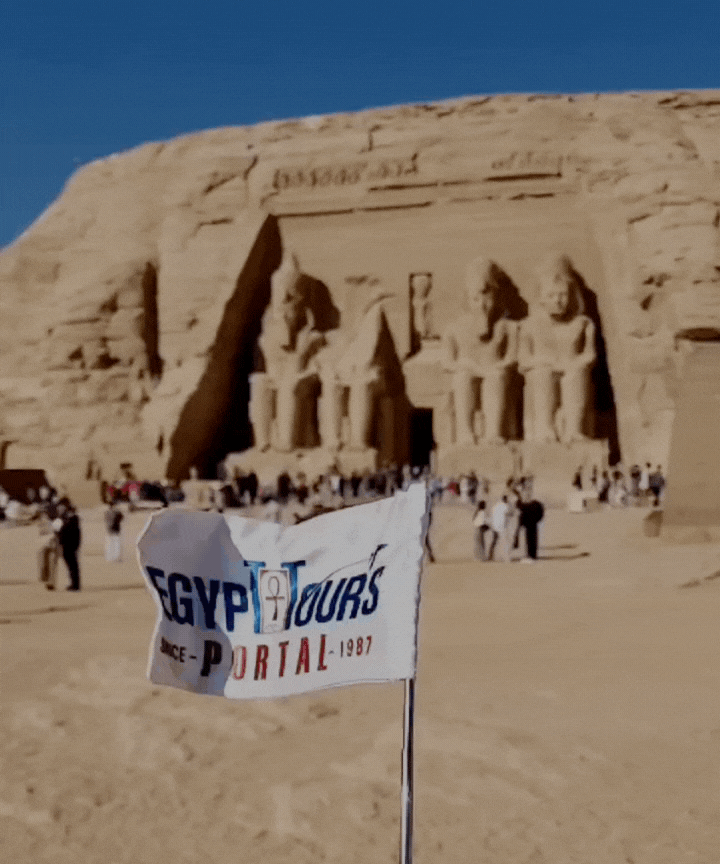
Abydos temple is one of the holiest & oldest sites in the history of ancient Egypt. “Abydos” is located 11 km (6.8mi) west of the Nile river and is considered to be amongst the most famous and important archaeological sites in the world.
The site dates back to the Predynastic Period which operated as a necropolis under the name of UMM El Qa’ab “The Mother of Pots”, a royal cemetery of the 1st (2925-2775 BCE) and 2nd (2775-2650 BCE) dynasties for the Egyptian royalty, a pilgrimage center for the worship of the god “Osiris” and a supposed gateway to the Underworld.
The temple holds the tomb of Narmer, the founder of the First Dynasty, and it was the center of the cult of Osiris, but originally sacred to the jackal-headed god Wepwawet; he couldn’t overpower the new dominance of the God of the underworld.

The main attraction at Abydos is the Temple of Seti I (1318-1304 BC), which was constructed around 1300 BC and completed by his son Ramses II (1304-1237 BC). Despite being built in the New Kingdom, it still carried the artistic revival of the Old Kingdom Spirit. The temple marks King Seti’s attempt to consolidate the Ramessid dynasty after the losses created by Akhenaten.
Many generations in ancient times chose to be buried next to the temple of Osiris to win his graces in the afterlife. The Abydos temple was rebuilt and enlarged by numerous Pharaohs of the Middle and New Kingdoms. The temple is quite famous because of the Pseudo archaeology theory “Helicopter Hieroglyphs,” which are carvings of Hieroglyphs found on an arch that resembles a helicopter, a battle tank, a submarine, and a fighter plane that looks like a UFO.

Abydos temple is very huge and holds a number of ruins around the edge of the desert. The most renowned monument is the Grand Temple of Seti I, known for its unique architectural design as it has an L-shaped layout and its seven sanctuaries are dedicated to the Pharaoh & the principal gods of Egypt, Ptah, Re-Herakhte, Amun, Osiris, Isis, and Horus, and two broad hypostyle halls.
The temple contains many inscriptions and decorations of Seti and his son Ramses II in the Galley of the Kings, making an offering to the cartouches of their deceased predecessors like Menes, Hatshepsut, Akhenaton, and many others.
North of the temple of Seti is the majestic Osireion (Seti I cenotaph), a room made of massive stone blocks, and one contained a mound surrounded by a moat, which symbolizes the primal mound that came out from the waters of chaos at the dawn of Creation and promotes a close connection between the pharaoh’s Ka and Osiris. About 300m northeast of Seti’s temple lie the ruins of the temple of Ramses II and other vast complexes from the prehistoric age to the Roman times.
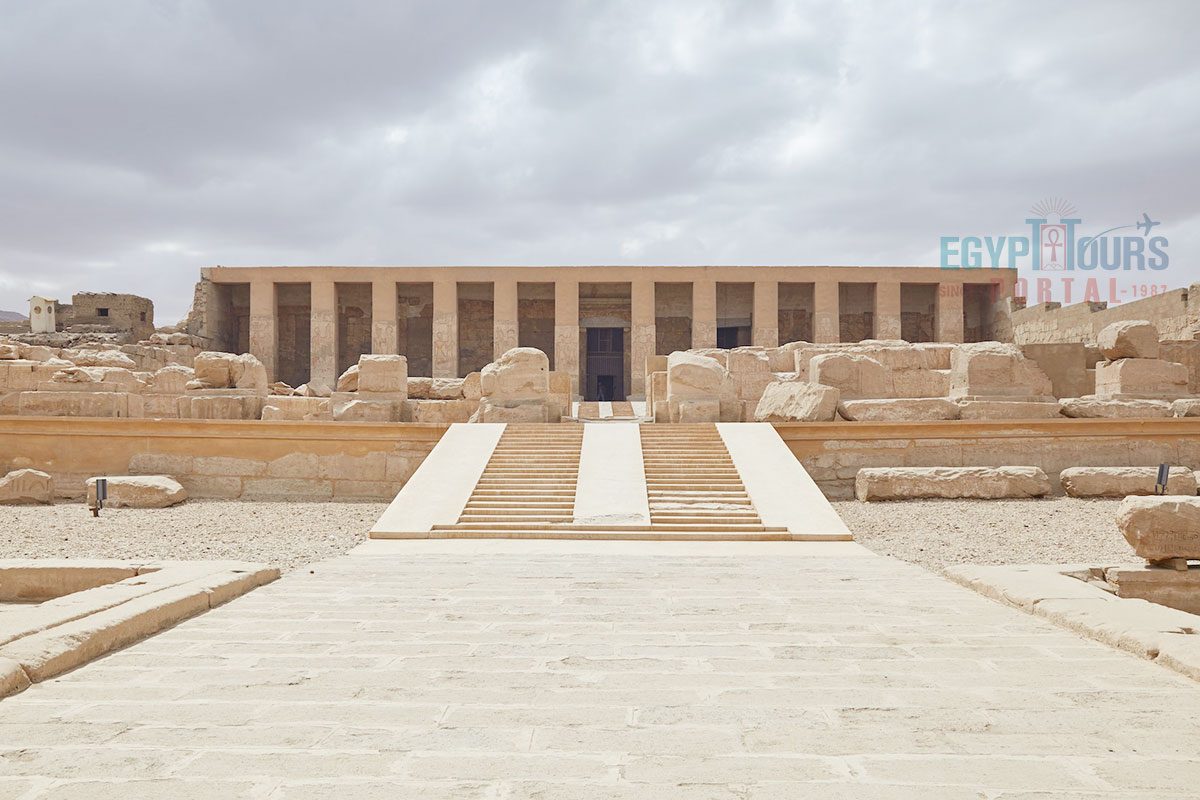
The Abydos Temple a.k.a the Temple of Seti I, is located in Upper Egypt, near the modern village of Al-Araba al-Madfuna. It is situated about 11 km (7 miles) west of the Nile River, in the desert near the town of Sohag. Abydos is 160 km (100 miles) north of Luxor. This location has been a significant religious site since the earliest days of the pharaonic civilization.

The Abydos Festival was an annual religious drama held to reenact the murder and resurrection of Osiris, a key event in ancient Egyptian mythology. The play celebrated Osiris's victory over death and symbolized the cycle of death and rebirth. Pilgrims from across Egypt would attend the festival, as it was believed that participating in the rituals ensured their rebirth in the afterlife.
Everyone would gather to witness this festival, which included processions, prayers, and performances near Osiris’s supposed tomb at Abydos. The performance was akin to a pilgrimage for ancient Egyptians, and its themes of renewal and the afterlife were essential for the participants' spiritual lives.
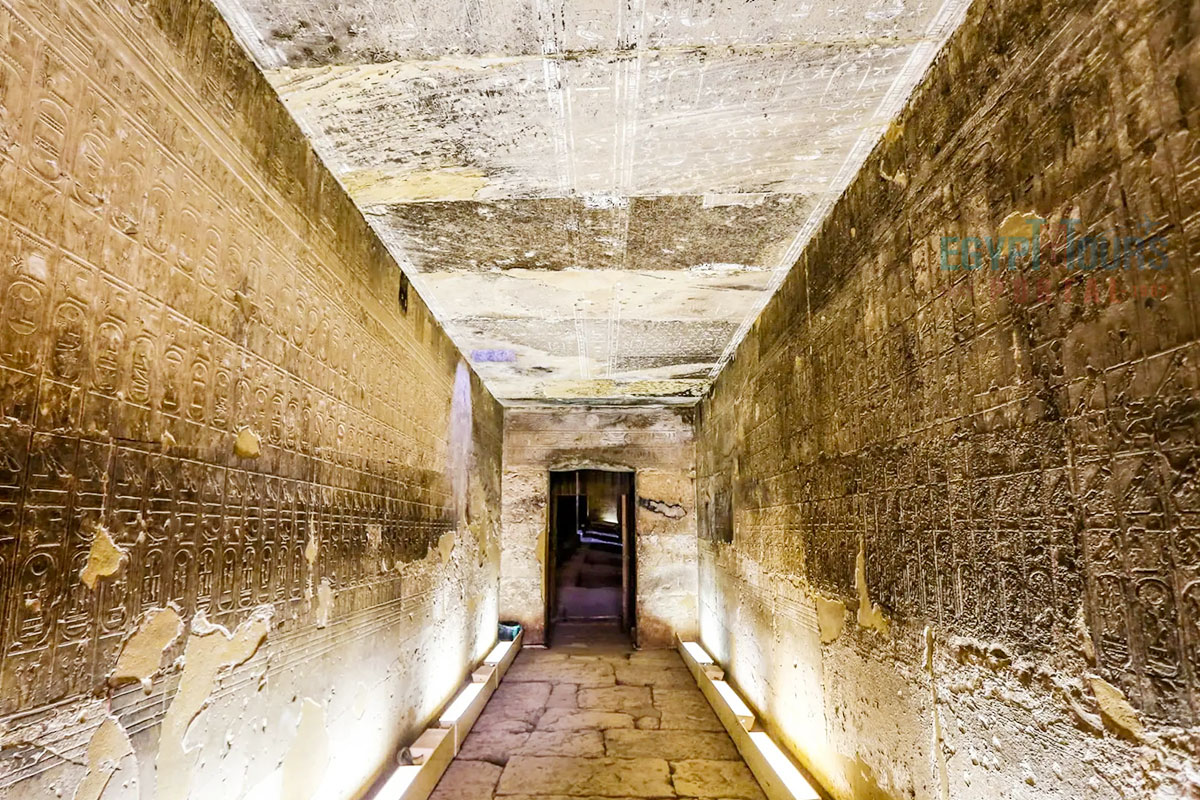
The Abydos King List is a chronological list of 76 ancient Egyptian kings, inscribed on the walls of the Temple of Seti I. The list begins with Menes (Narmer), the first king of the First Dynasty, and ends with Seti I, the reigning pharaoh. It was a way for Seti I to legitimize his reign by linking himself to Egypt's ancient kings. The list consists of three rows of 38 cartouches, each containing the name of a king. The top two rows include names of kings, while the third row repeats Seti I’s throne name and nomen. It is highly valued for providing the only known names of many Seventh and Eighth Dynasty kings and documenting the Old Kingdom's order of rulers.
The list omits several earlier pharaohs from different time periods. These excluded rulers, such as those of the Ninth, Tenth, early Eleventh, Thirteenth Dynasties, and the Hyksos of the Fifteenth Dynasty, likely had limited authority or were deemed illegitimate. The chaotic Amarna Period rulers (Akhenaten, Smenkhkare, Neferneferuaten, Tutankhamun, and Ay) were excluded for political reasons, possibly as a form of damnatio memoriae. Female pharaohs like Sobekneferu and Hatshepsut are also left out, likely due to their gender. Mentuhotep IV was possibly excluded for political reasons or a lack of sources for his brief reign.

Abydos is famous for its intricate carvings, particularly in the Temple of Seti I. The temple walls are adorned with reliefs depicting the pharaoh's relationship with the ancient Egyptian gods, including Amun, Ptah, Re-Horakhty, plus the triad of Osiris, Isis, and Horus. The carvings in Abydos are some of the finest examples of ancient Egyptian art, known for their detailed depiction of religious rituals, offerings, and scenes of the afterlife.
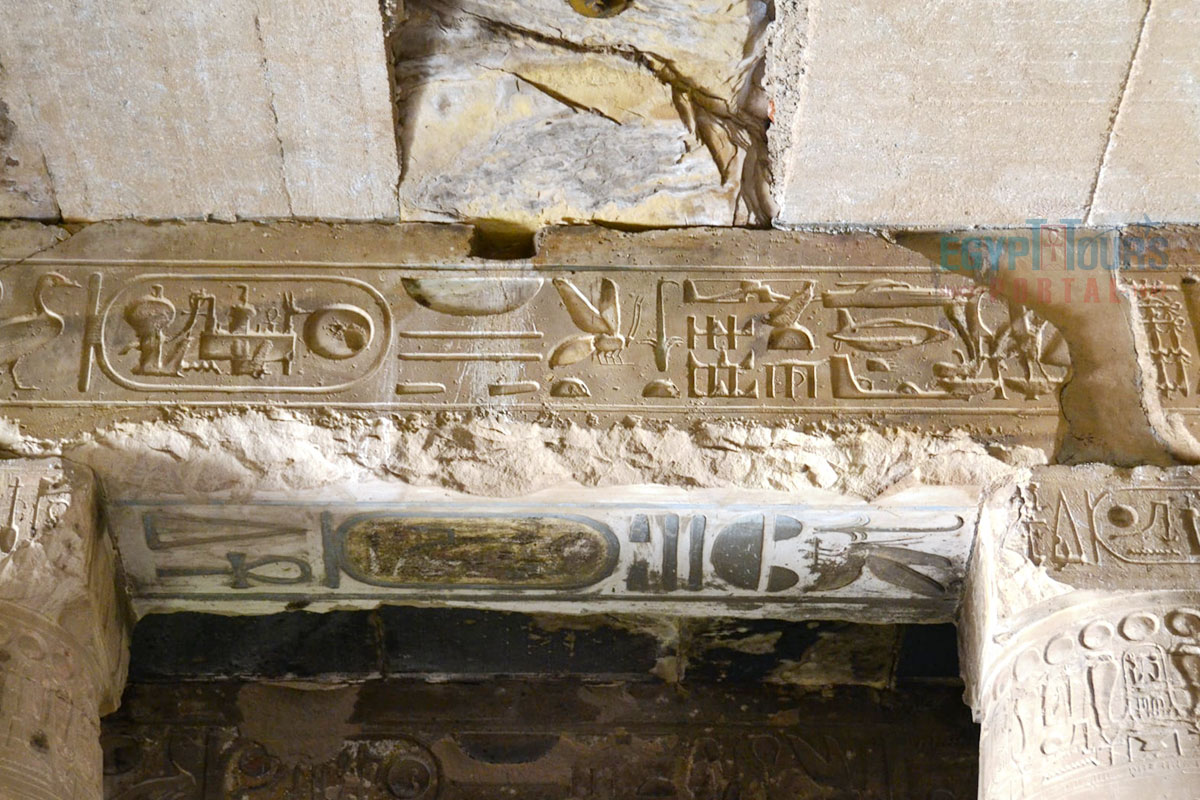
The so-called "Abydos Helicopter Hieroglyphs" are located in the Temple of Seti I and are often cited by proponents of ancient astronaut theories. These carvings appear to resemble modern vehicles like helicopters, submarines, or airplanes. In reality, the supposed "helicopter" is the result of pareidolia, formed by a bow hieroglyph from Seti I's inscription and two arm hieroglyphs from Ramesses II's.
The original carving during Seti I's reign (1294–1279 BC) translates to "Powerful of scimitar, who suppresses the nine bows (enemies of Egypt), Menmaatra". Ramesses II (1279–1213 BC) later had the inscription altered to "Protector of Egypt, who repels foreign lands, Usermaatra-Setepenre". The plaster, over time, used to modify the hieroglyphs eroded, leaving both inscriptions partially visible and creating the overlapping effect.
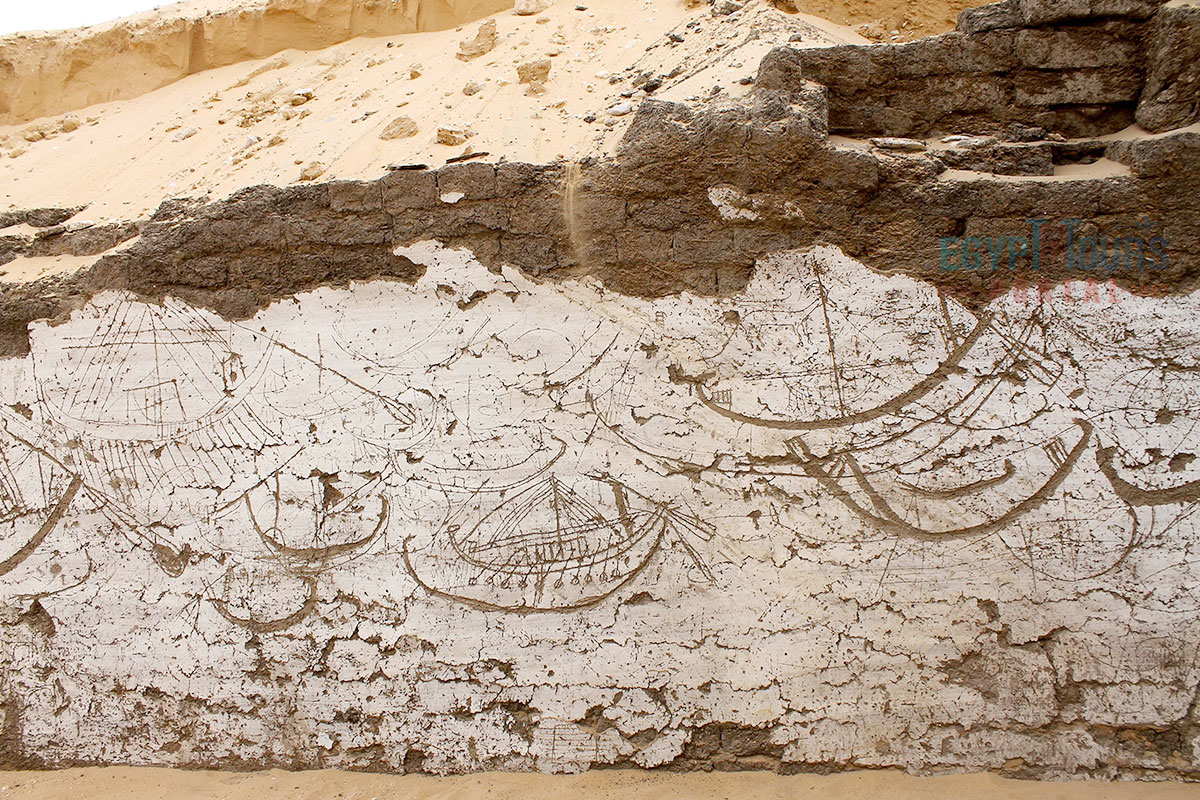
The Abydos boats, discovered in 1991 in Abydos, Egypt, are ancient royal ceremonial vessels dating back to the early pharaohs (around 3000 BCE), likely Hor-Aha or Djer of the First Dynasty. The discovery of these boats supports the idea that maritime symbolism was deeply ingrained in Egyptian religious beliefs about the afterlife. Excavation of the site, near the 2nd Dynasty structure Shunet El Zebib, began in 2000, revealing fourteen boats buried with brick walls shaped like ship outlines.
These boats, which are 75 feet long, were made from local Tamarix wood using a unique mortise and tenon joint technique, differing from later Mediterranean sea shipbuilding methods. Believed to have had ritual significance, they were intended for the pharaoh's afterlife journey, serving as predecessors to the solar boats, like Khufu's barque. Similar, though less documented, boat burials have also been found at sites like Helwan and Saqqara.

Abydos played a crucial role in the development of Egyptian writing. Some of the earliest hieroglyphic inscriptions have been found in ancient Egyptian tombs at Abydos. Numerous inscribed bone labels, dating back 5,300 years, were discovered in the tomb of King Scorpion I at Abydos. These labels, attached to bags of oil and linen, represent the world's earliest known writing, detailing the owners, quantities, and suppliers of the inventory. The carvings and writings in the Temple of Seti I are highly revered for their clarity and artistic quality. The Abydos King List is also inscribed on the temple’s walls, which is a vital source of historical records.

Abydos is closely associated with the earliest versions of symbols such as the Djed pillar, a symbol representing stability and associated with Osiris. The Djed was a powerful symbol used in rituals at Abydos, symbolizing Osiris's spine and his resurrection. Other important symbols found in Abydos carvings include the Ankh (symbol of life) and the Was scepter (symbol of power). Across the walls of Abydos are ancient writings featuring many symbols that were used throughout the history of Egypt.
Explore the outstanding symbols of the ancient Egyptian civilization
Read More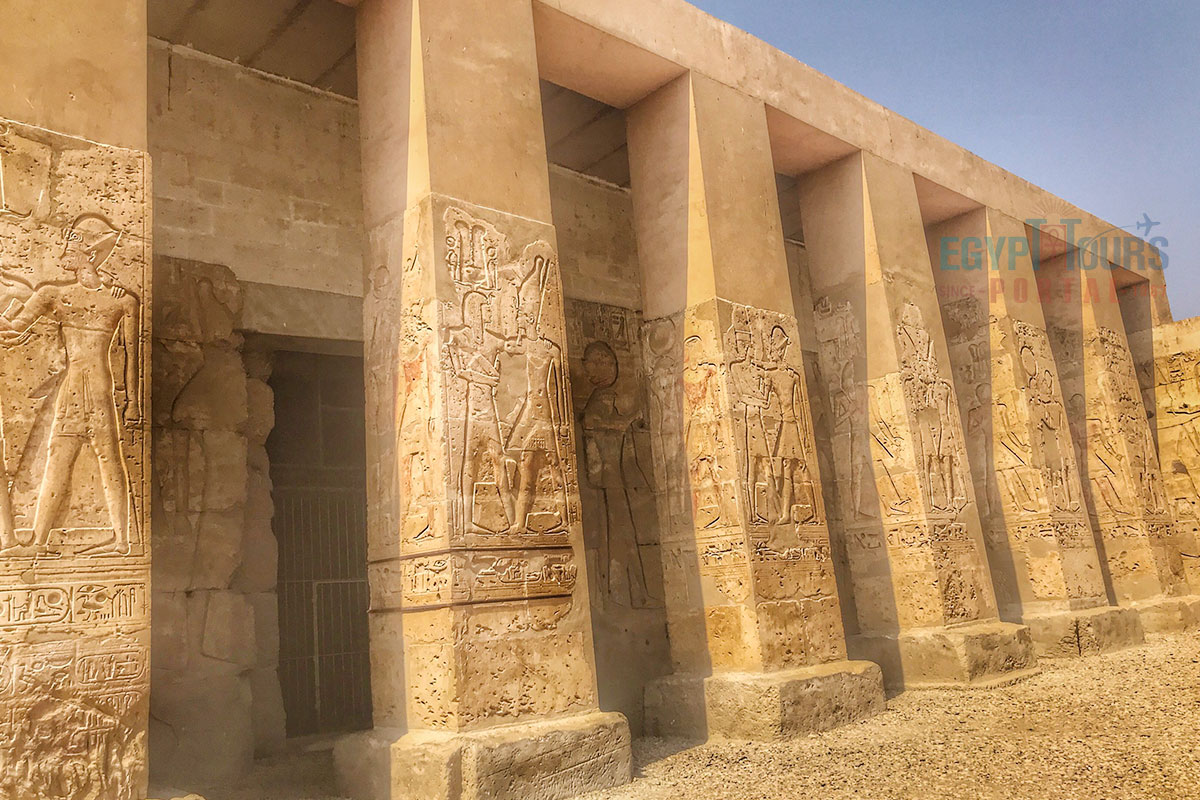
Abydos has been the site of extensive archaeological research, with its rich layers of history revealing tombs, temples, and relics from Egypt's earliest dynasties. Excavations have unearthed artifacts from royal tombs, including pottery, tools, and offerings. Abydos is famed for housing some of the earliest royal tombs from Egypt’s First Dynasty and the oldest examples of Egyptian hieroglyphs, providing valuable insights into the dawn of political power in ancient Egypt.
Archaeological digs have also unearthed a 5,000-year-old brewery, capable of mass-producing beer, likely for both ceremonial and everyday use. Intact wine jars found in royal tombs add to the rich narrative of ancient life. Abydos was a major religious hub, devoted to the worship of Osiris, with the Osireion representing a symbolic tomb for the god of the underworld. Major excavations at Abydos began in the 19th century and continue today, revealing more about this ancient site.
Discover the remarkable temples of the ancient Egyptian civilization
Read More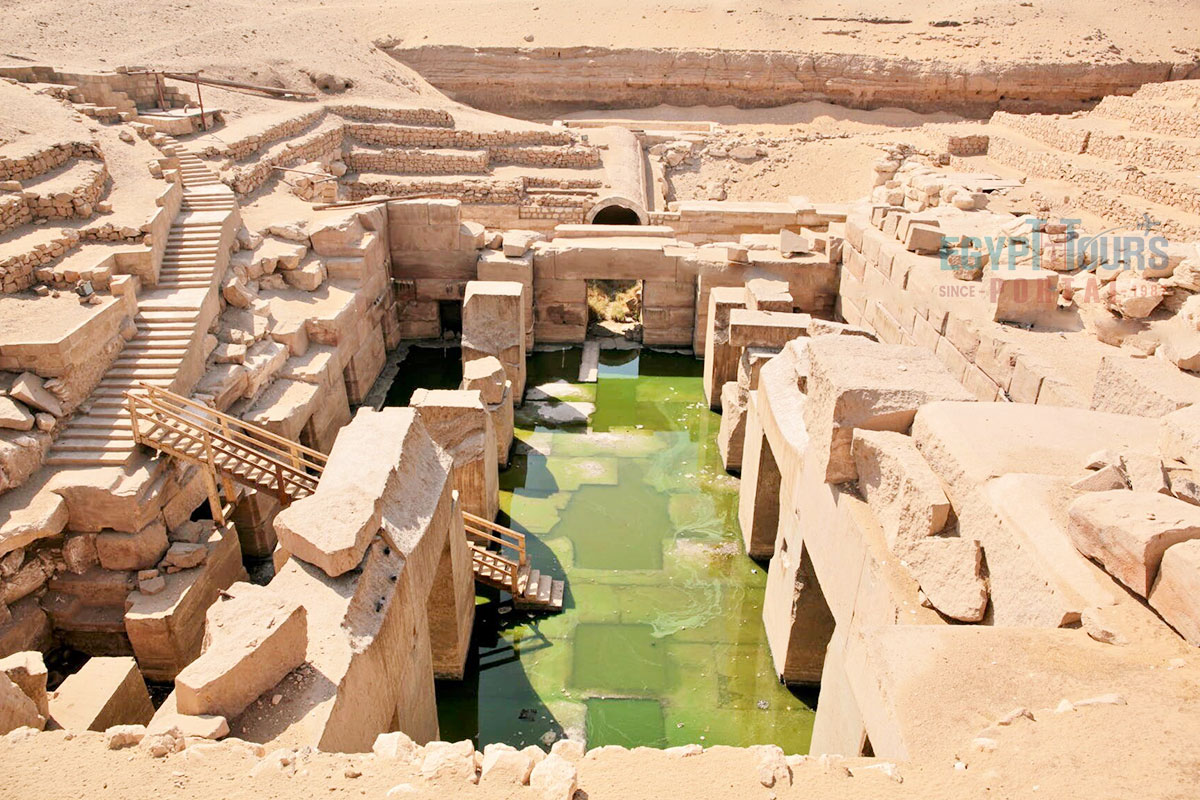
Abydos is home to the royal tombs of Egypt's early dynasties, especially those from the First Dynasty. The Umm el-Qa'ab necropolis "The Mother of Pots" contains the burial places of the kings of the early dynasties, including King Narmer and King Djer. Early Egyptian burials began as simple brick-lined pits, with Menes' tomb measuring about 15 ft by 25 ft.
Over time, tombs grew larger and more complex, often featuring chambers for offerings and rows of servant burials, which sometimes included evidence of human and animal sacrifice, like the 118 servants and donkeys in Merneith's tomb. By the Second Dynasty, tombs evolved into long passageways with chambers for offerings. Despite the looting of later tombs, valuable items such as jewelry, stone vases, and records of royal reigns were discovered. A cemetery for private individuals began in the First Dynasty and continued through the Roman period.
The temple is located in Upper Egypt, so you can visit it during your Nile river cruise while on your grand Egypt tour, which will also shed light on the great temples and attractions of Egypt that have stood the test of time.
Day Trip from Luxor to Cairo by Plane For Australian Travelers Day trip from Luxor t...
Tour Location: Cairo...
Tour to Luxor West Bank For Australian Travelers Tour to Luxor West Bank is like ste...
Tour Location: Luxor...
Tour to Edfu and Kom Ombo For Australian Travelers Edfu & Kom Ombo tour fro...
Tour Location: Edfu/Kom Ombo...
Trip to Dandara and Abydos from Luxor for Australian Travelers A Trip to Dandara and...
Tour Location: Dandara/Abydos...
The Abydos temple was built (3200–3000 BCE), then its crown jewel Seti temple, was made as a mortuary temple for the pharaoh Seti I (1290 BC -1279 BC), for honoring the god Osiris, the ruler of the underworld, and to serve as a religious center. This sacred site is believed to be the burial place of Osiris, and became a major pilgrimage destination for Egyptians. The temple was constructed to facilitate rituals dedicated to Osiris and other deities, emphasizing the pharaoh’s connection to the gods and ensuring his place in the afterlife.
The holes seen in the Temple of Seti I are thought to have several potential origins. Some may have been caused by structural damage due to earthquakes or other natural degradation over time. Others could have been the result of ancient looting, where tomb robbers or early treasure hunters removed sections of the walls to extract valuable objects or materials. some holes may have been created by later reuse of the temple stones in other construction projects.
The Osireion at Abydos is believed to have been built by Seti I himself as a cenotaph. It is located behind the Temple of Seti I and was constructed to honor Osiris, mimicking an underground tomb symbolizing the underworld. The structure’s purpose was deeply spiritual, symbolizing rebirth and eternity.
The Abydos rituals, particularly those involving the annual "Mysteries of Osiris" festival, began to decline during the late period of ancient Egypt, around the time of the Persian conquest (6th century BCE), with the fall of the Egyptian empire. Political instability, foreign invasions, and the gradual shift away from the traditional Egyptian polytheistic religion, especially with the spread of Christianity in the Roman and Byzantine periods, led to the abandonment of these religious practices.
The god Osiris is associated with Abydos, as it was believed that his head or another part of his body as buried at this sacred site. Abydos was considered one of the primary cult centers of Osiris, and the rituals performed there focused on his death, dismemberment, and resurrection.
Abydos is one of the oldest cities in ancient Egypt, with archaeological evidence dating it back to around 3000 BCE or even earlier. This date is established through a combination of carbon dating, stratigraphy, and the study of artifacts and hieroglyphics found in and around the site, including early dynastic tombs and inscriptions of the kings of the First Dynasty.
The famous Abydos King List in the Temple of Seti I contains 76 cartouches of pharaohs from the First Dynasty up to Seti I. This list excludes certain rulers, such as Hatshepsut and Akhenaten, who were considered controversial or illegitimate by Seti I’s reign.
Abydos is now called Al-Araba al-Madfuna, which is a small village in modern-day Egypt near the site of the ancient city.
The first historic king to build a tomb at Abydos is generally considered to be King Narmer, who united Upper and Lower Egypt around 3100 BCE, and his tomb is located in the Umm el-Qa'ab necropolis at Abydos.
The distance from Abydos to the Red Sea is about 250 kilometers (155 miles). The journey would have been executed in ancient times due to Egypt's extensive trade networks.
The size of the tombs at Abydos is very diverse, as it significantly depends on the era and the status of the individual buried. The early royal tombs, such as those of the First Dynasty, are relatively modest, typically measuring 10-20 meters across. Later tombs, like those from the Middle Kingdom or New Kingdom, can be much larger and more elaborate, with subterranean chambers and elaborate decoration designed to honor the deceased in the afterlife.
The entire country of Egypt deserve to be explored with its every heavenly detail but there are places that must be seen before any other such as the breathtaking Hurghada's red sea, The wonders of Cairo the pyramids of Giza, the great sphinx, the Egyptian Museum, Khan El Khalili Bazaar, the wonders of Luxor like Valley of the Kings, Karnak & Hatshepsut temple and the wonders of Aswan such as Abu Simbel temples, Philea temple, Unfinished obelisk and The Wonders of Alexandria like Qaitbat Citadel, Pompey's Pillar and Alexandria Library. Read more about the best places to visit in Egypt.
If you want to apply for a Visa On Arrival that lasts for 30 days then you should be one of the eligible countries, have a valid passport with at least 6 months remaining and pay 25$ USD in cash, as for the E-Visa for 30 day you should have a valid passport for at least 8 months, complete the online application, pay the e-visa fee then print the e-visa to later be presented to the airport border guard. You could also be one of the lucky ones who can obtain a free visa for 90 days. Read more about Egypt travel visa.
Egypt has a variety of delicious cuisines but we recommend “Ful & Ta’meya (Fava Beans and Falafel)”, Mulukhiya, “Koshary”, a traditional Egyptian pasta dish, and Kebab & Kofta, the Egyptian traditional meat dish.
The best time to travel to Egypt is during the winter from September to April as the climate becomes a little tropical accompanied by a magical atmosphere of warm weather with a winter breeze. You will be notified in the week of your trip if the Climate is unsafe and if any changes have been made.
You should pack everything you could ever need in a small bag so you could move easily between your destinations.
We have been creating the finest vacations for more than 20 years around the most majestic destinations in Egypt. Our staff consists of the best operators, guides and drivers who dedicate all of their time & effort to make you have the perfect vacation. All of our tours are customized by Travel, Financial & Time consultants to fit your every possible need during your vacation. It doesn't go without saying that your safety and comfort are our main priority and all of our resources will be directed to provide the finest atmosphere until you return home.
You will feel safe in Egypt as the current atmosphere of the country is quite peaceful after the government took powerful measures like restructuring the entire tourist police to include all the important and tourist attractions in Egypt. Read more about is it safe to travel to Egypt.
Wear whatever feels right and comfortable. It is advised to wear something light and comfortable footwear like a closed-toe shoe to sustain the terrain of Egypt. Put on sun block during your time in Egypt in the summer to protect yourself from the sun.
The best activity is by far boarding a Nile Cruise between Luxor and Aswan or Vise Versa. Witness the beauty of Egypt from a hot balloon or a plane and try all the delicious Egyptian cuisines and drinks plus shopping in old Cairo. Explore the allure and wonders of the red sea in the magical city resorts of Egypt like Hurghada and many more by diving and snorkeling in the marine life or Hurghada. Behold the mesmerizing western desert by a safari trip under the heavenly Egyptian skies.
There are a lot of public holidays in Egypt too many to count either religious or nation, the most important festivals are the holy month of Ramadan which ends with Eid Al Fitr, Christmas and new years eve. Read more about festivals & publich holidays in Egypt.
Egypt is considered to be one of the most liberal Islamic countries but it has become a little bit conservative in the last couple of decades so it is advised to avoid showing your chest, shoulders or legs below the knees.
Arabic is the official language and Most Egyptians, who live in the cities, speak or understand English or at least some English words or phrases. Fewer Egyptians can speak French, Italian, Spanish, and German. Professional tour guides, who work in the tourism sector, are equipped to handle visitors who cannot speak Arabic and they will speak enough English and other languages to fulfill the needs of all our clients.
The fastest way is a car, of course, a taxi. If you are in Cairo ride a white taxi to move faster or you could board the fastest way of transportation in Egypt metro if the roads are in rush hour.
The temperature in Egypt ranges from 37c to 14 c. Summer in Egypt is somehow hot but sometimes it becomes cold at night and winter is cool and mild. The average of low temperatures vary from 9.5 °C in the wintertime to 23 °C in the summertime and the average high temperatures vary from 17 °C in the wintertime to 32 °C in the summertime. The temperature is moderate all along the coasts.
It is the home of everything a traveler might be looking for from amazing historical sites dating to more than 4000 years to enchanting city resorts & beaches. You will live the vacation you deserve as Egypt has everything you could possibly imagine.









